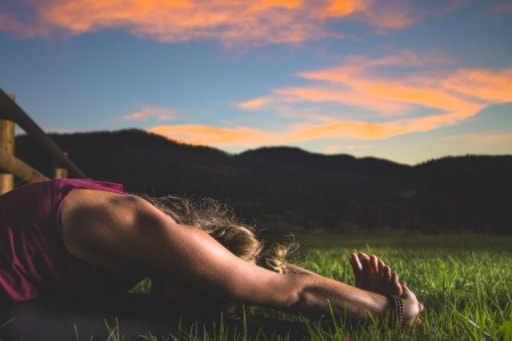Hiking can be a rigorous sport. You need to stay loose and comfortable, but it’s hard when you’re constantly holding onto tension in certain muscles for hours at time! When you’re out on the trail, the last thing you want is an injury slowing you down. That’s why it’s important to stretch before and after your hike. Stretching helps loosen up your muscles and prevent injuries. Plus, it feels good! Many hikers would probably agree that a good stretch is an essential part of any hike. How do you know what the good stretches for hikers are? Luckily, we have this guide that will help with some of the best stretches for hiking, so your body stays happy.

Table of Contents
Why is Stretching Important for Hikers?
Stretching can help improve flexibility, reduce muscle soreness, and lower your risk of injury.
It’s not just about warming up your muscles before you start hiking; stretching can help improve your performance while hiking and also reduce the risk of injury. Here are three reasons why hikers should stretch regularly.
First, stretching helps to warm up your muscles, which can lead to improved performance when hiking. Muscles that are warmed up are less likely to cramp or strain during activity.
Second, stretching improves flexibility, which can help you navigate difficult terrain more easily. Flexible muscles are also less likely to tear or sprain during activities such as hiking.
Finally, stretching helps prevent injuries. Hiking is a strenuous activity and can often lead to injuries if proper precautions aren’t taken. Stretching helps improve joint range of motion and overall muscle strength, both of which can help reduce the likelihood of injuries while hiking.
Benefits of Stretching Before or After Hiking
Increases blood flow Increases blood flow to your muscles helps warm them up. Muscles that are warmed up are less likely to cramp or strain during activity.
Increases flexibility Flexible muscles help you navigate difficult terrain more easily. Flexible muscles are also less likely to tear or sprain during.
Increase your range of motion Stretching loosens up your muscles and tendons, giving you full range of motion
Reduces pain and risk of injury A tight muscle is more likely to cause an injury. After a strenuous workout, it’s important that you stretch and loosen up your muscles so they can recover properly
Elimination of lactic acid If you feel sore after hiking, it could be because of lactic acid. This substance is produced when we exercise and can make muscles ache or tired- especially if they were tense at first! Stretching helps reduce the amount of lactic acid present in our bodies by calming down muscle tension before/ during activity as well promoting blood flow so there’s less chance for buildup
What Muscles Should You Stretch For Hiking?
But are you sure you’re stretching the right muscles? Here’s a guide to the best muscles to stretch for hiking, so you can stay loose and comfortable on your next hike.
- Hamstrings
- Quads
- Calves
- Hips
- Feet
- Glutes
- Neck
- Back
Stretches for Hikers
Calf Stretch
Quad Stretch
Hamstring Stretch
Wrist Stretches No something you’d probably think you’d see in a post about stretches for hikers, but if you plan to use trekking poles, this is a good stretch for you to do before you begin hiking.
Runner’s Lunge
Ankle Stretches
Hiking is an activity that requires you to stay limber and flexible. If your body isn’t prepared for the rigorous movement, it can cause injury or pain in other joints which will make hiking less enjoyable! To prevent this from happening be sure take some time before each hike (and after) to stretch out those muscles so they’re ready when needed most.
